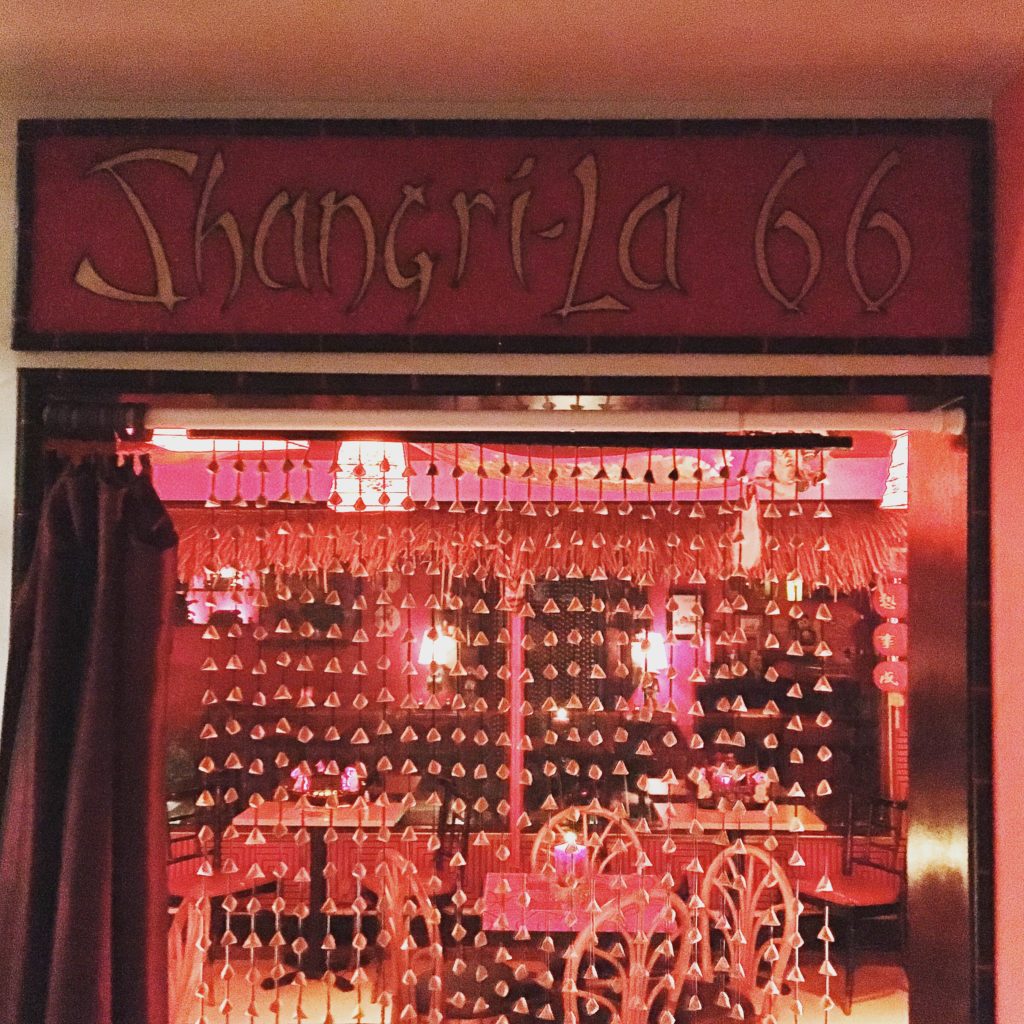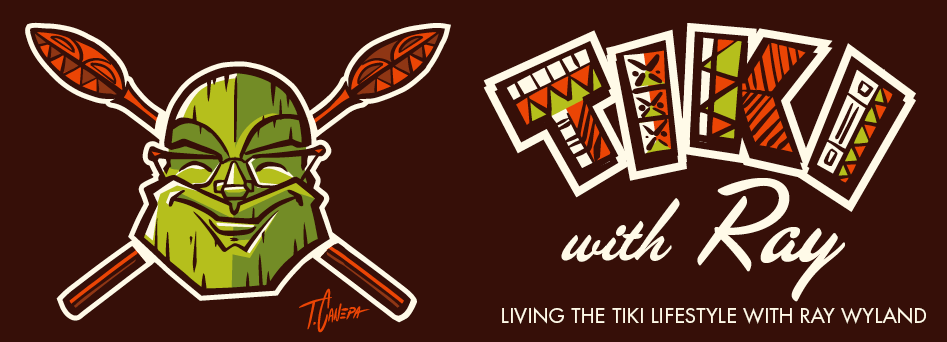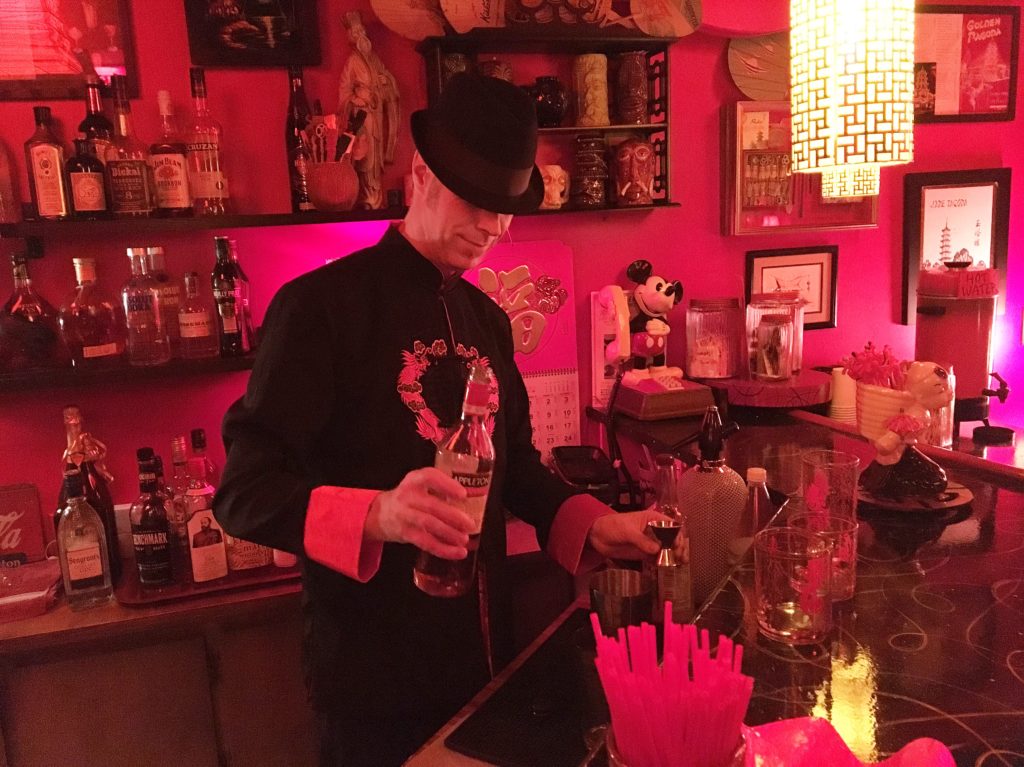
There has always been a connection between Asian culture and Tiki. Food served at Tiki restaurants back in the day was pretty much Chinese food. (Shhh! Don’t tell anyone!) If you step up to the bar inside a Chinese restaurant, don’t be surprised to find some Tiki drinks on the menu. Jeffrey has a love for both Chinese and Tiki cultures. So Jeffrey and his partner Erik created a bar in their home that combines both. It’s called Shangri-La 66…
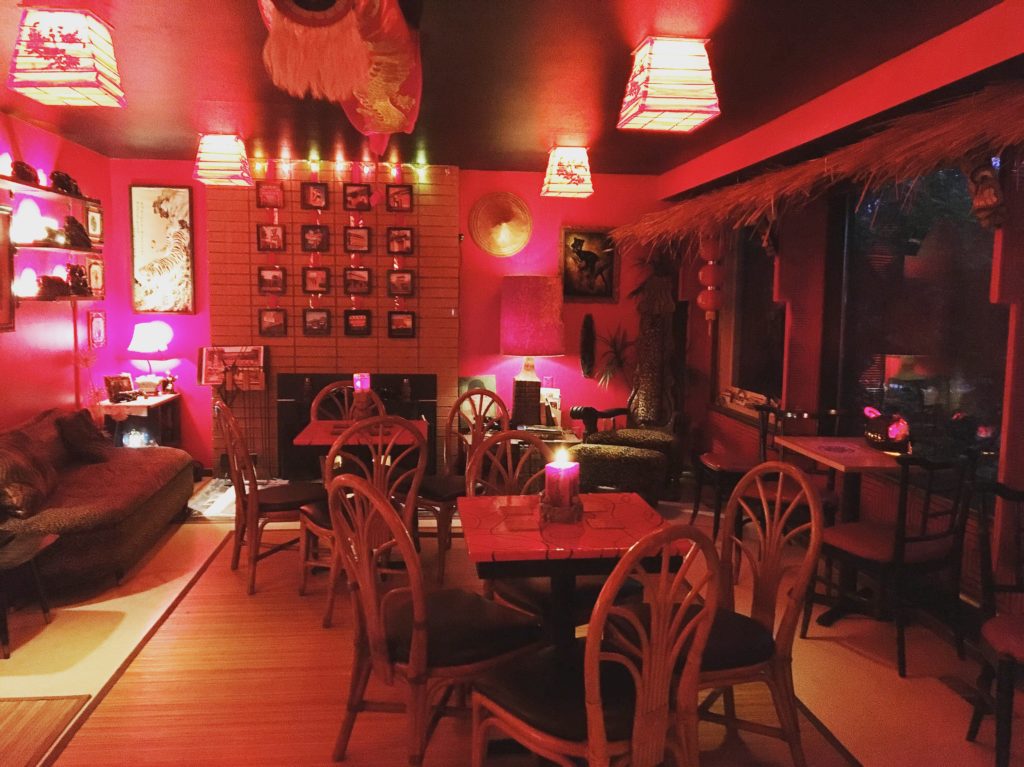
When did you get into the Tiki lifestyle and what got you into it?
Jeffrey- I hosted themed cocktail parties for many, many years as part of my Starlite Lounge series, exploring retro themes like “Cocktail Caravan” and “I Spy Cocktails.” The two Tiki ones I did in 1998 and 2001 alerted me to the rare existence of the great Tiki bars and the culture that once surrounded them. Erik and I have spent fifteen years traveling to the last of the best of them—and to some of the worst.
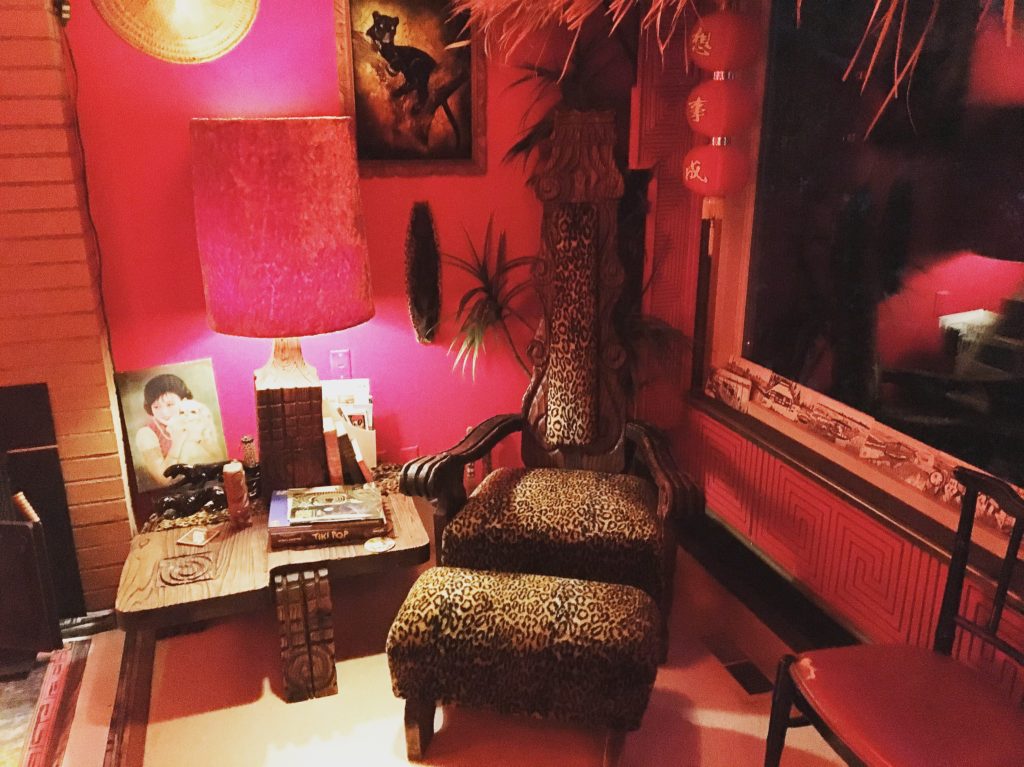
What is your favorite Tiki drink? Why?
Jeffrey- Erik and I like classic originals, so the Mai Tai. The delicious and simple mix of rum, almond, and lime, sweet but balanced, really hits the spot when properly made. Erik has gamely tried every Mai Tai at every tropical bar we’ve been to and says he will judge the quality of the place based on that. After several dozen Tiki bars, he’s had the best and the worst. In Spain they were green.
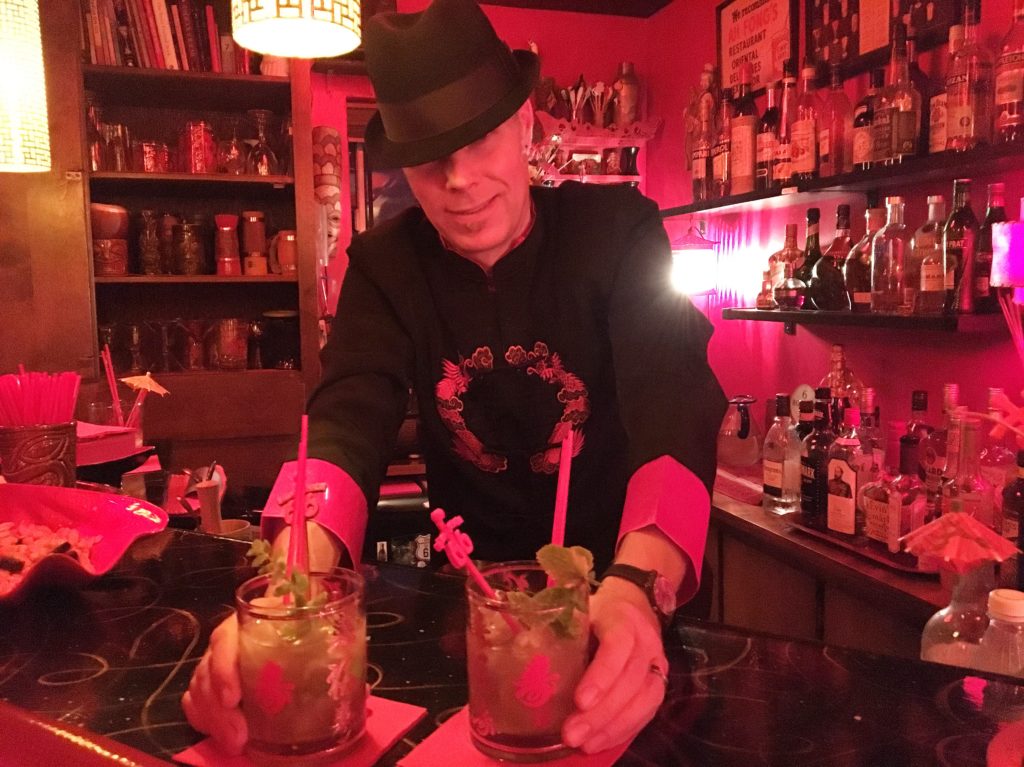
Not including your own, what is your favorite Tiki bar? Why?
Jeffrey- The Mai Kai in Ft. Lauderdale is, of course, quite perfect and the best. We also love the Tonga Room in San Francisco for its drama and Trader Vic’s in Atlanta for classic quality.
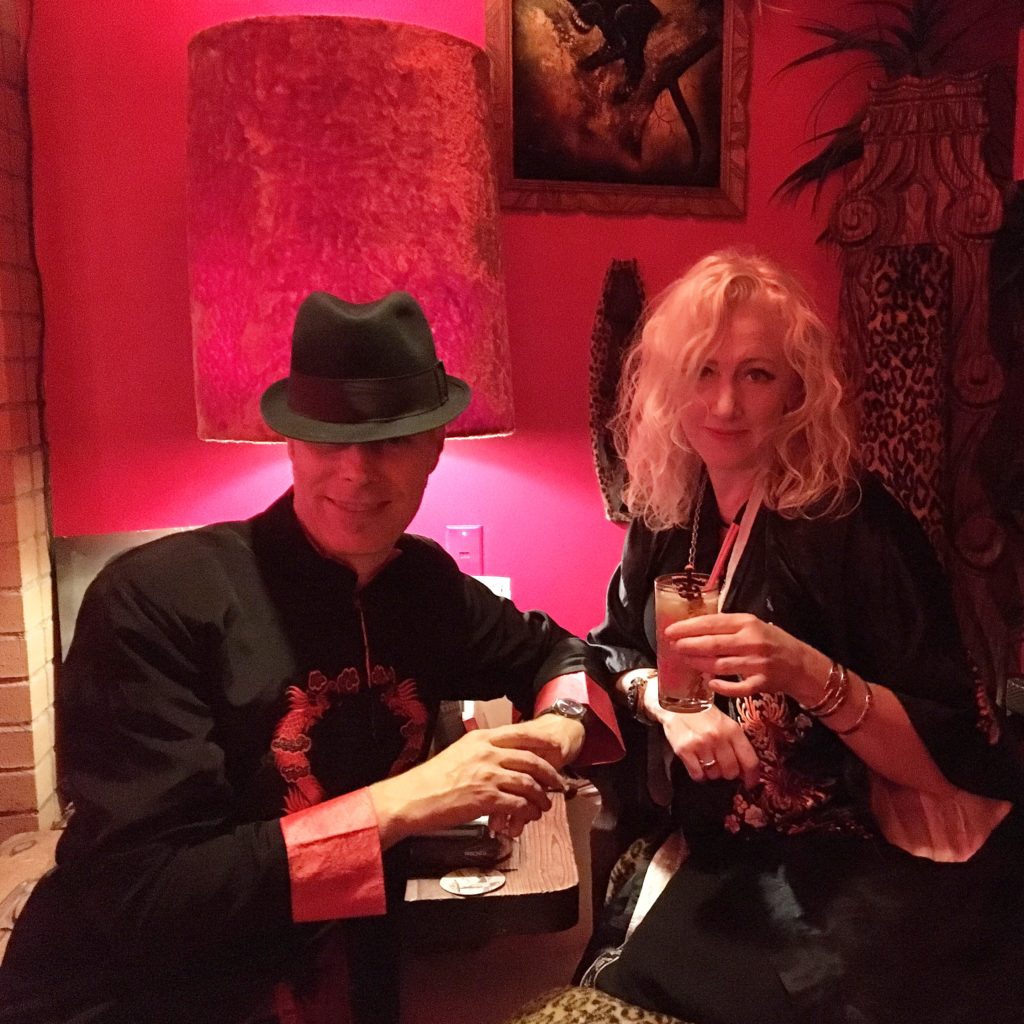
When and what made you decide to build your own bar?
Jeffrey- It’s been an inevitable process, really, starting with my Starlite parties, which completely redecorated the apartments we lived in, to the more permanent little garden/patio Tiki bar at our previous condo. A place to build a themed bar was one of our “must haves” when we worked with realtor Marlow Harris to find our dream home. We entertain often for various occasions and it’s nice to have a dedicated place to make a mess. Not having to wake up to a kitchen full of half-full glasses and fruit flies is a dream for me.
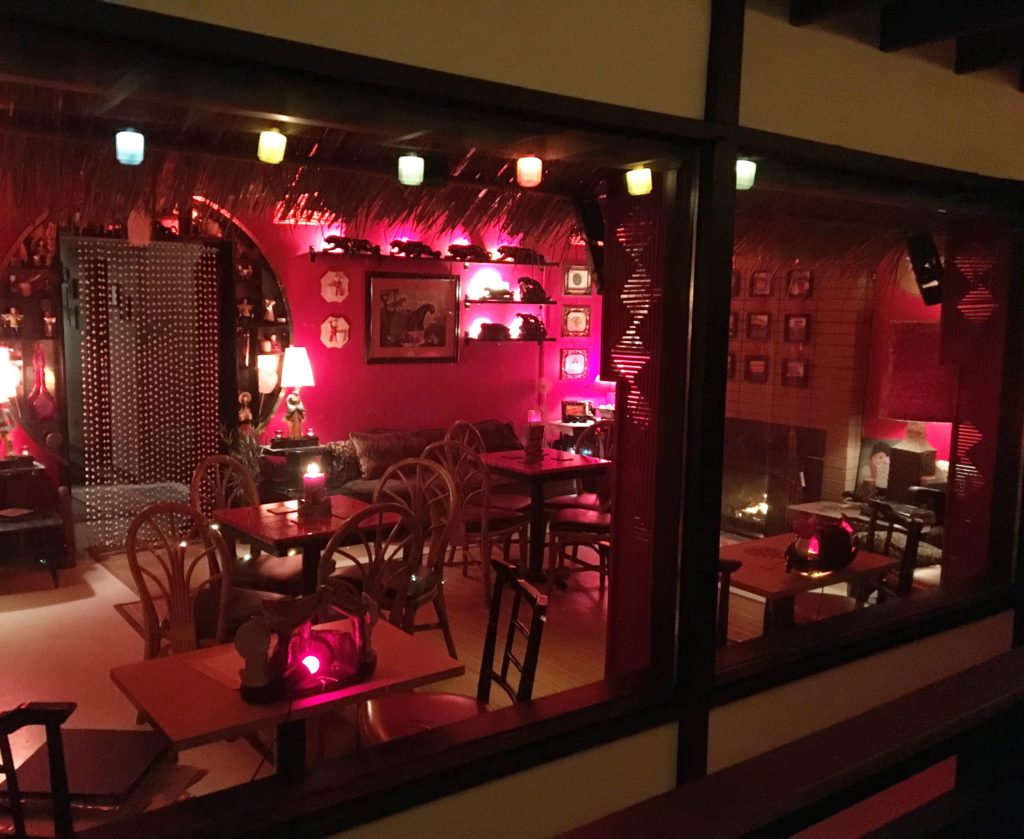
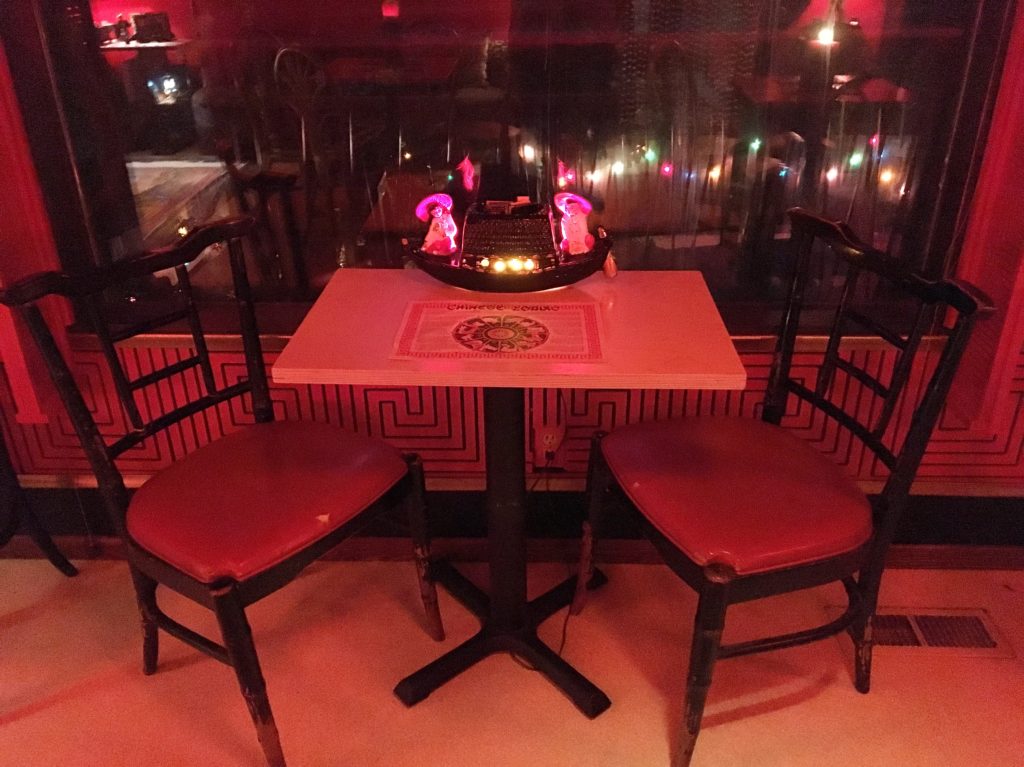
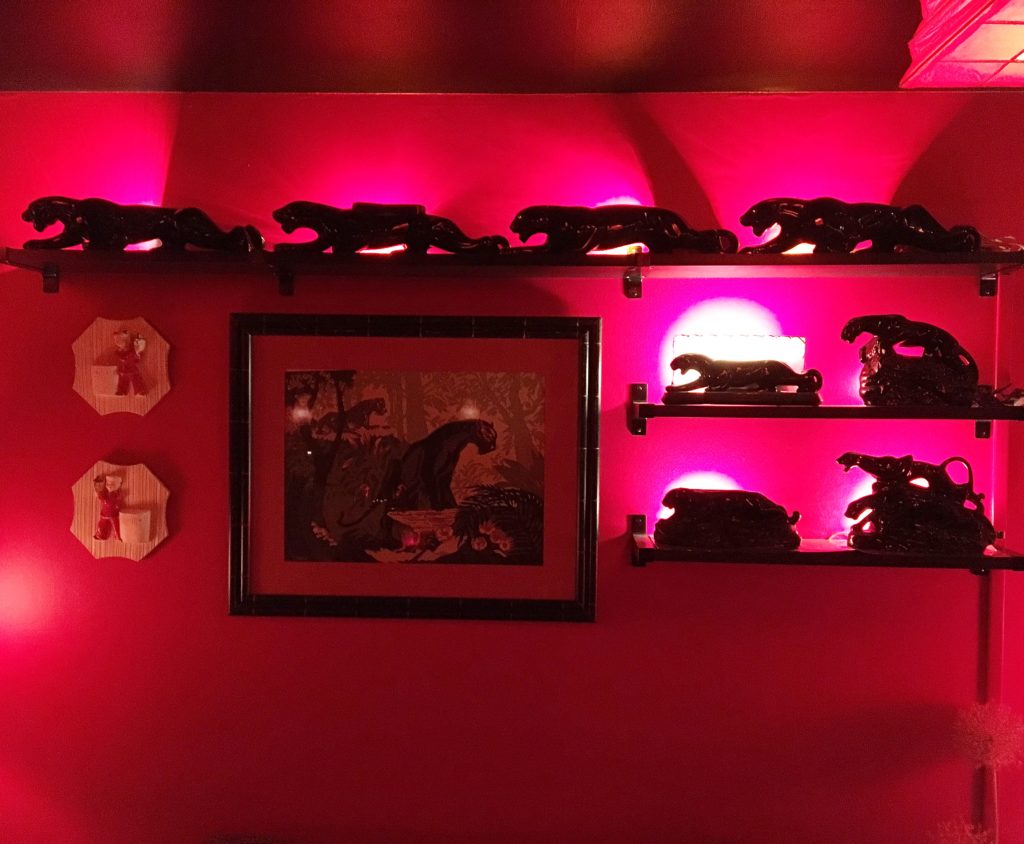

Your Tiki bar has a Chinese theme. Can you talk about your interest in Chinese culture?
Jeffrey- My father traveled to China quite a bit in the ’70s and ’80s, researching their agricultural standards as part of his work with the USDA. His earliest slide photos show a China that looked just like it did two hundred years earlier: unchanged. He would come home with gifts for us—some he bought and some his friends over there sent us. We would get boxes of gifts at Christmas time, all smelling of some kind of sandalwood. One time he got off the plane wearing a Chinese dragon mask for me. It’s hanging in our lounge. I have many things from those early days. I particularly like the way the style became “Oriental Modern” in the 1960s.
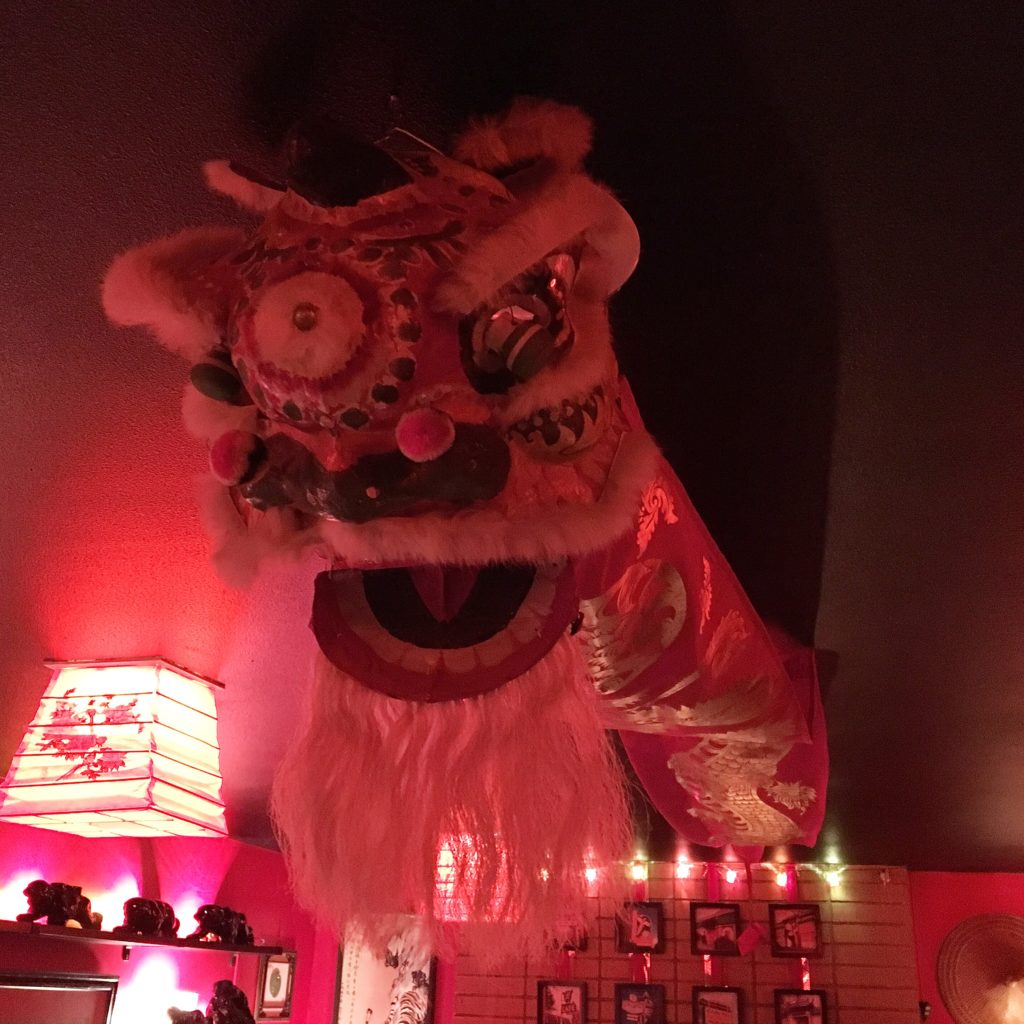
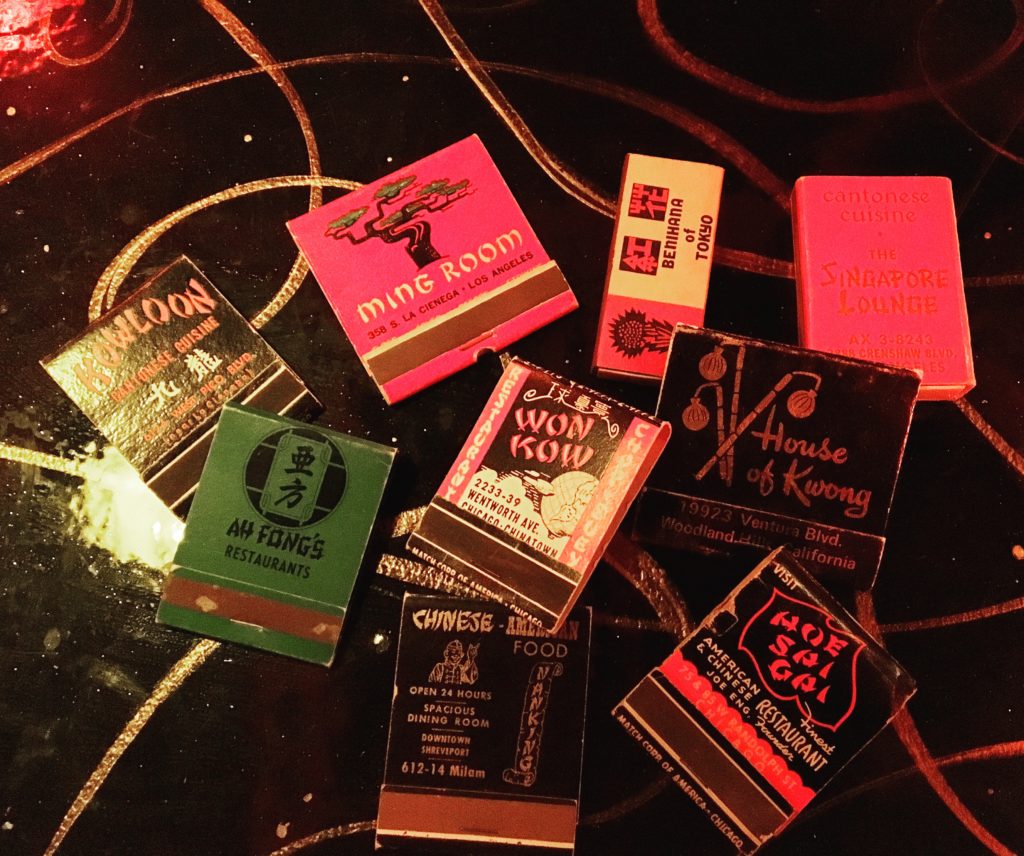
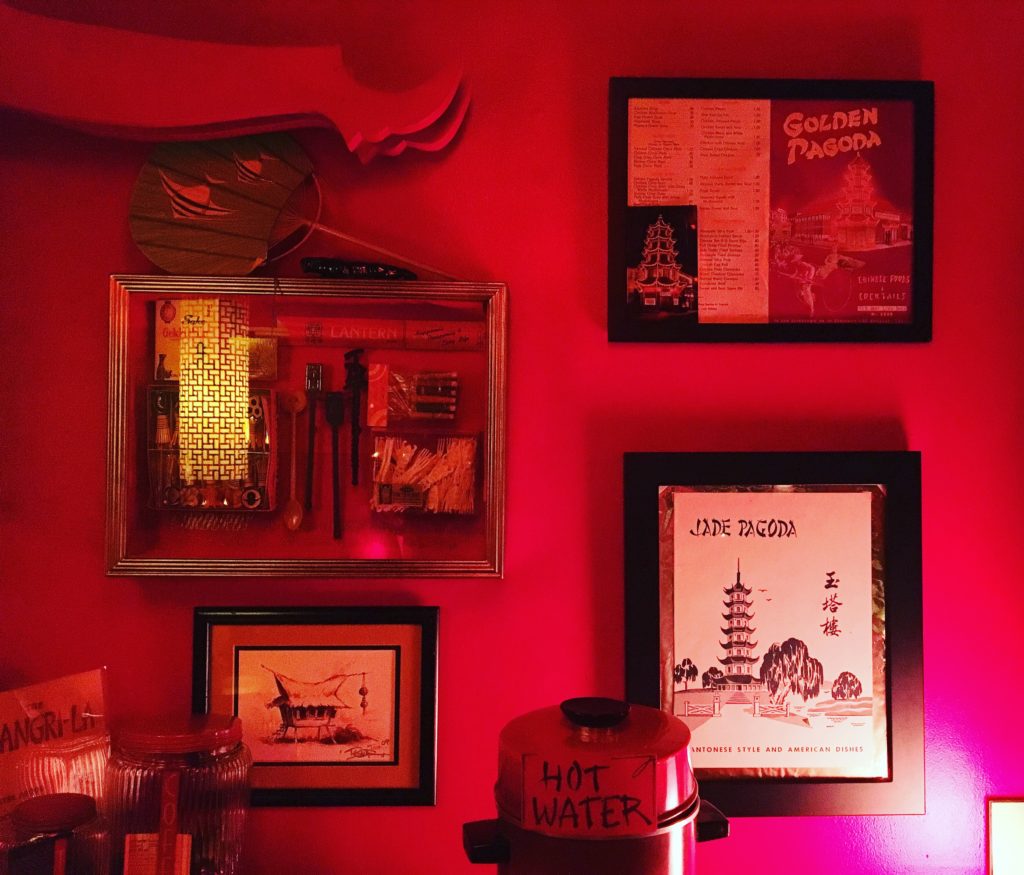
Can you give a little history of how your bar came together?
Jeffrey- Erik and I both love themed restaurants and classic, one-of-a-kind American experiences. Just as all of the great Tiki bars have fallen, so have many of the great Chinese restaurants and lounges. We used to take them for granted, but now they are seen as dark and outdated. It is hard to find the good ones, with good food and personality. The Chinese Americans who opened these restaurants in the 1930s-60s did so for work, but also to gain acceptance into our society. In the ’60s they all started selling tropical drinks and adding Tikis to “get with the times.” My favorite places now are a mix of Chinese and Tiki. Why not? It’s all a fantasy escape.
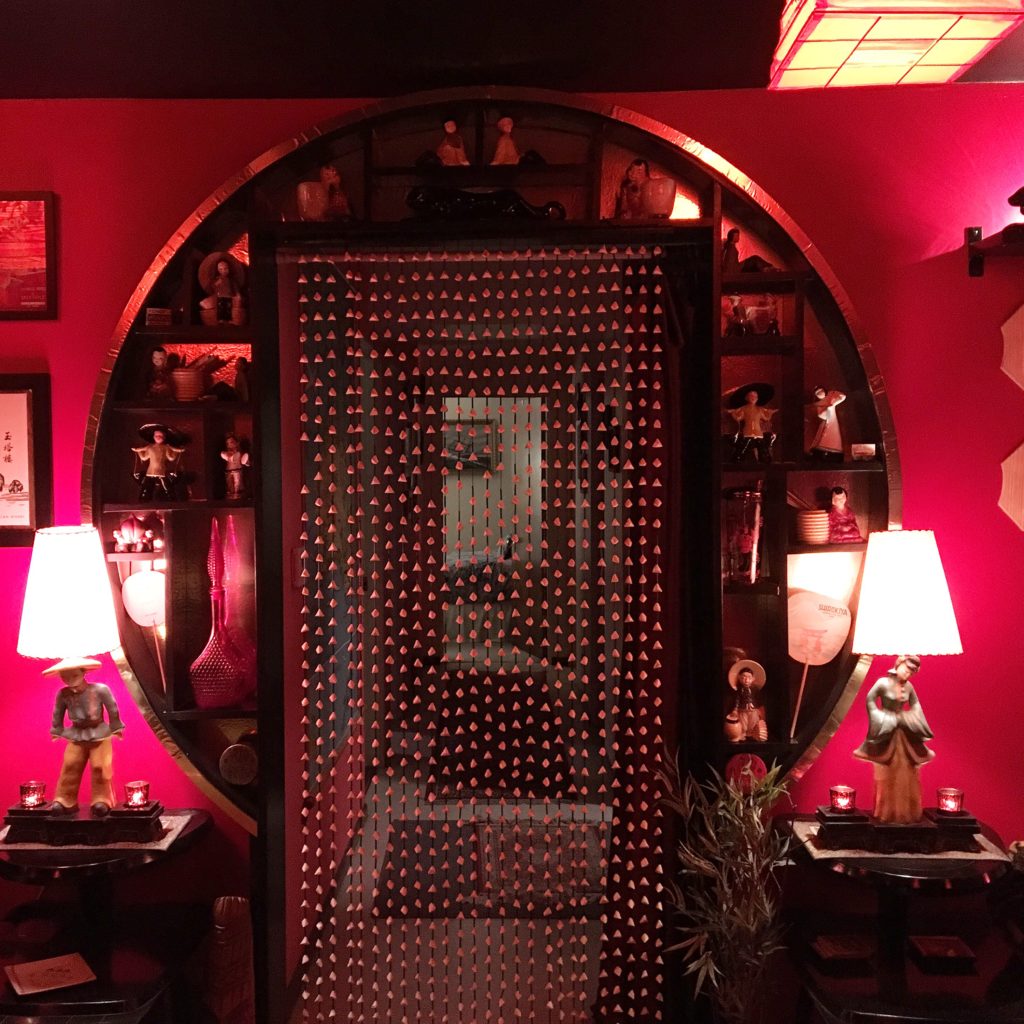
Locally I am inspired by Wah Kue in Burien, Red Lotus in Auburn, and China Doll in Everett. I was at the closing night of Jade Pagoda on Broadway. I miss that place. Everything now is overpriced and pretentious, not as much fun.
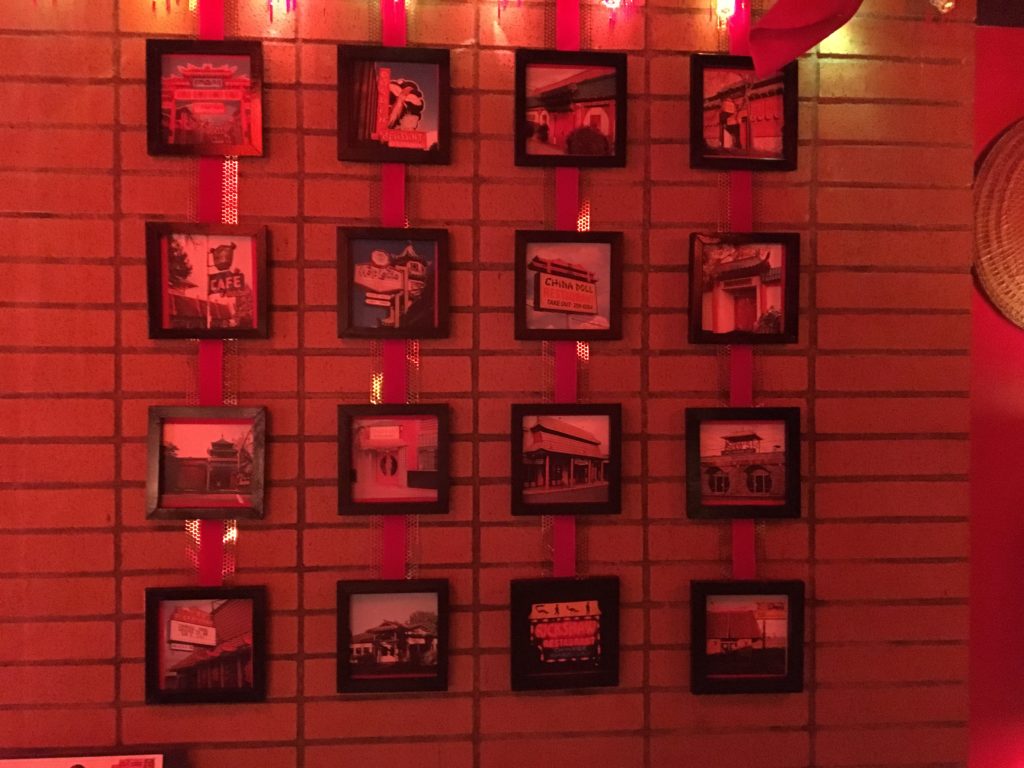
I always promised Erik a home Tiki bar and then sort of switched the theme on him, but he loves it. I will build a more permanent Mai Tai bar in the garden for him soon.
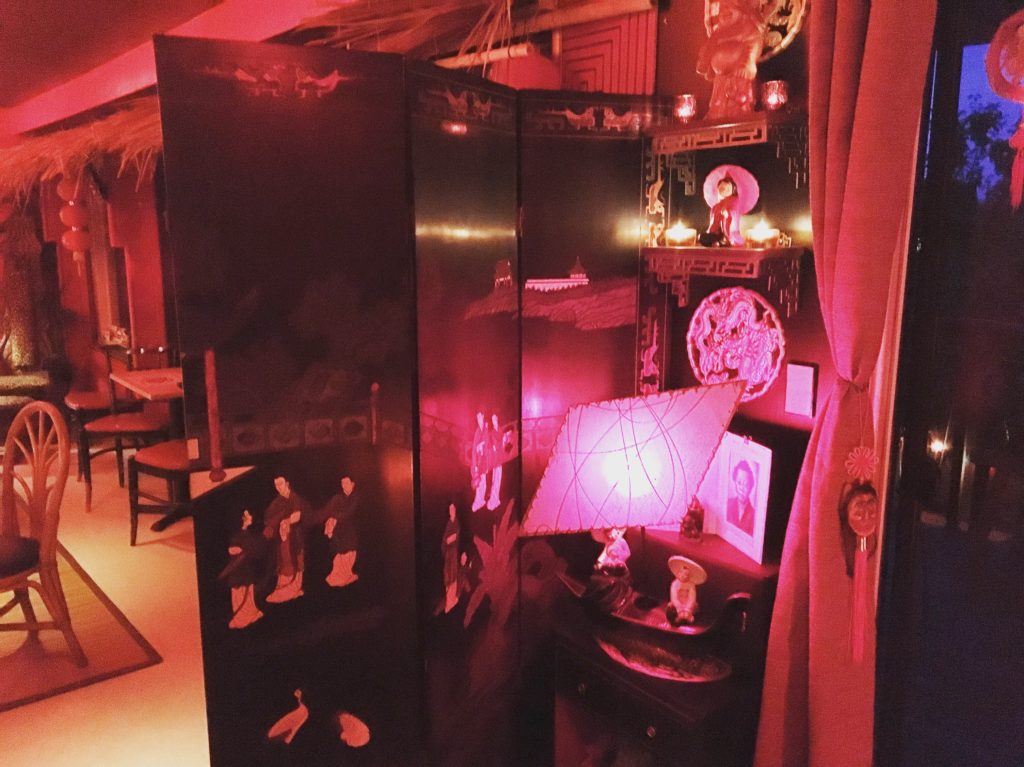
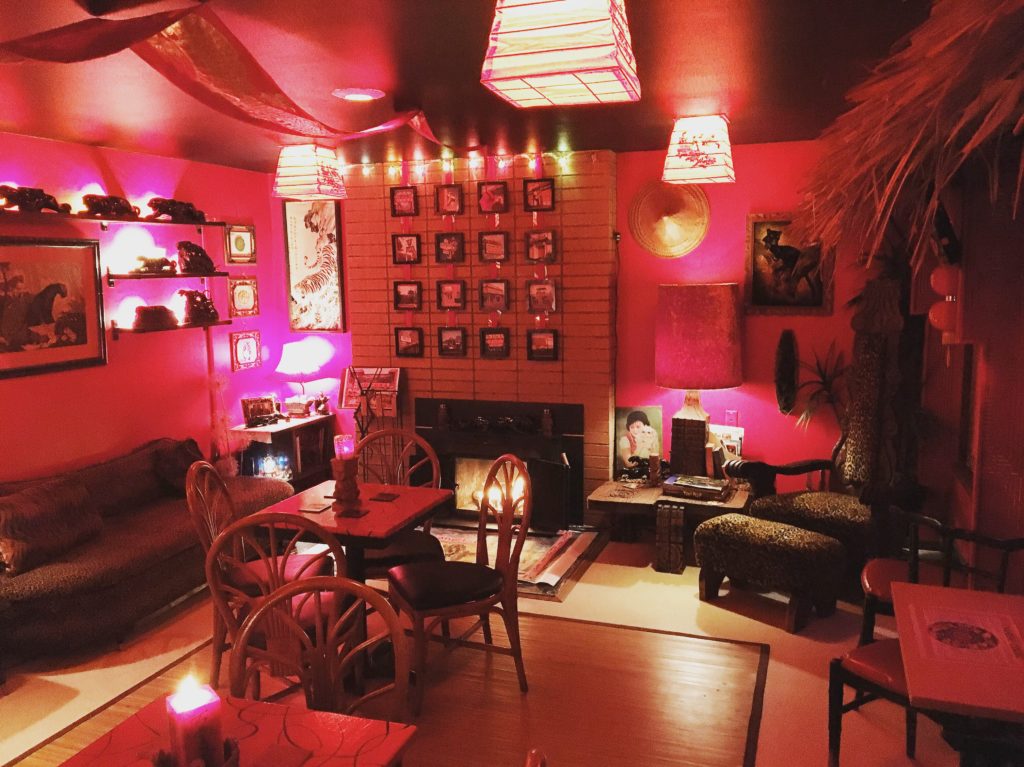
You have an amazing Mid-Century Modern home. Can you give me a little history on your place?
Jeffrey- This home was designed by Jimmy Eng and built for his family in 1966…
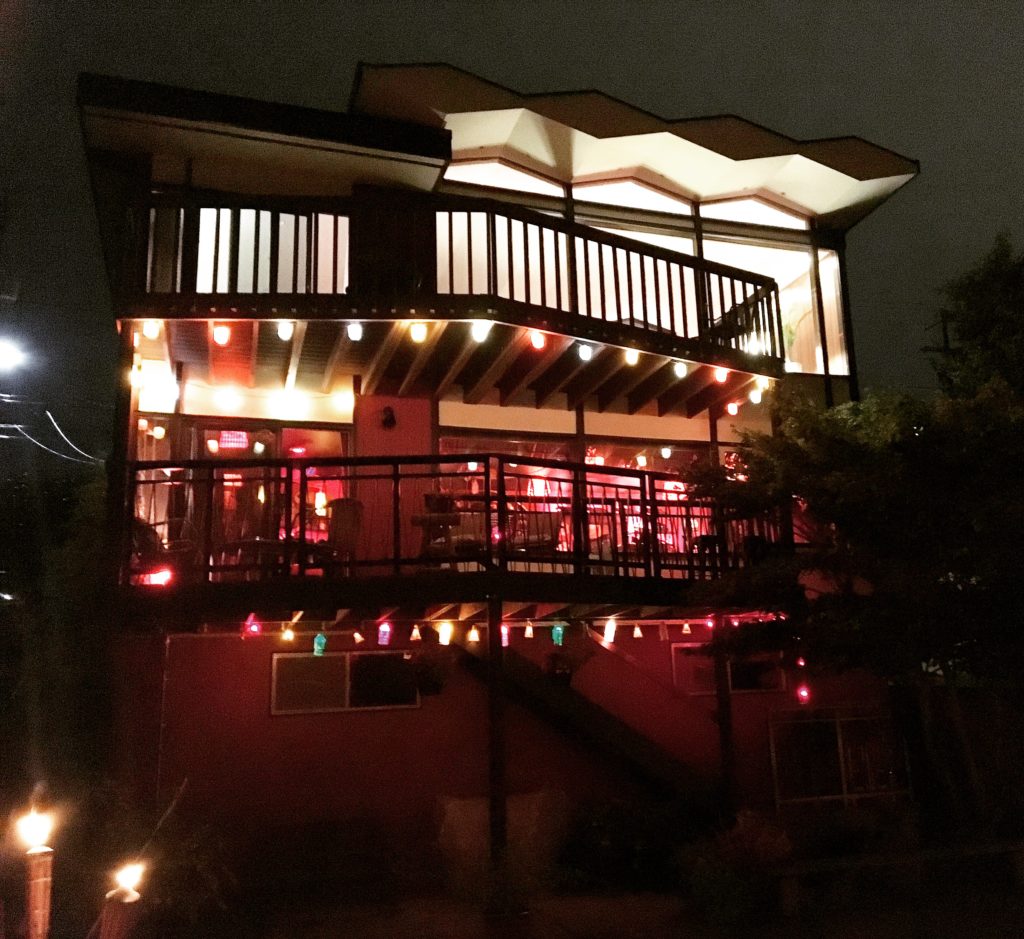
He was trained as an architect at the University and worked at Boeing. We bought the home from the three kids who grew up here after their mother died a few years back. We have blueprints of the plans that Mr. Eng drew and the house has really not ever changed. Mr. Eng put the best he could afford into the house, from the built in can opener to the exterior timed lights. Mrs. Eng kept it in excellent condition and made very few changes.
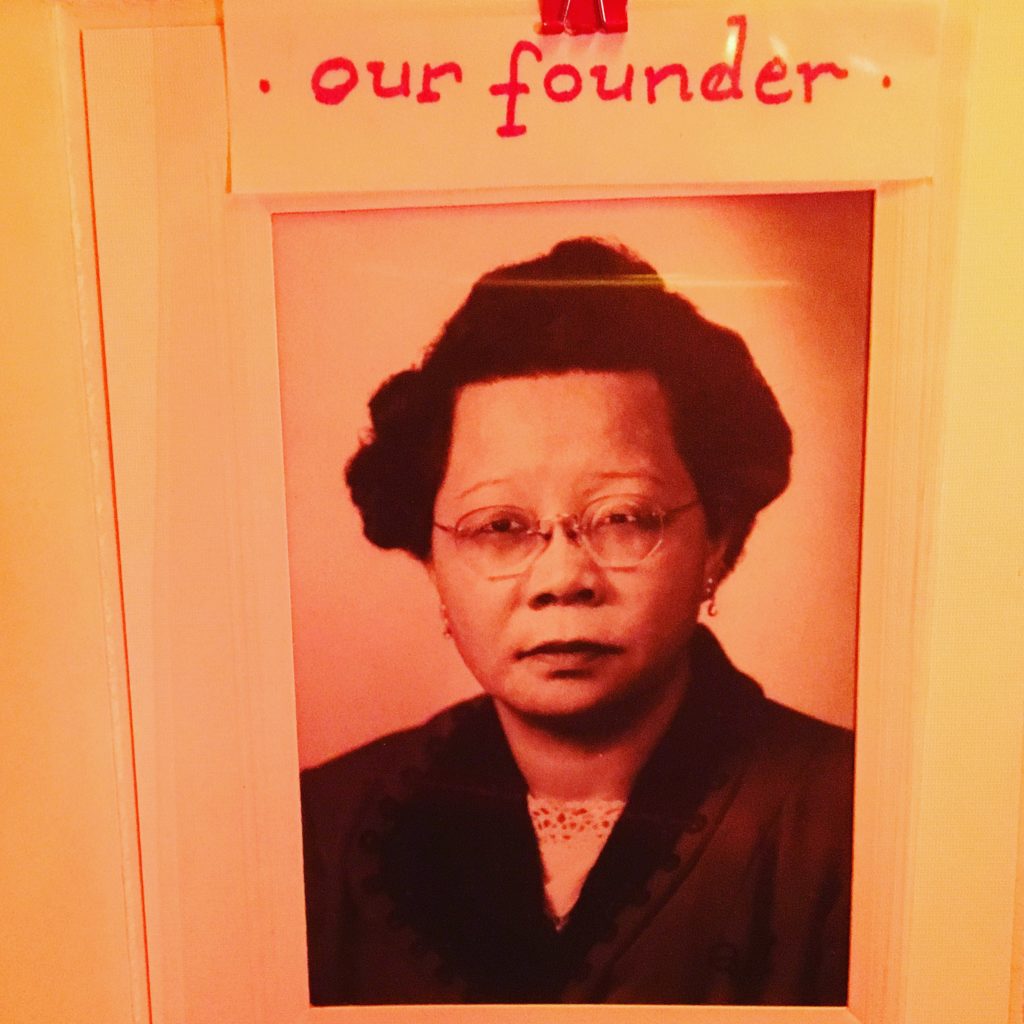
The upstairs fireplace has never been used. We intend to keep all original finishes and restore or replace anything with original parts and furniture, as we are able to. The house has been painted red and black now, but was originally stained wood tone. It was painted brown when we bought it.
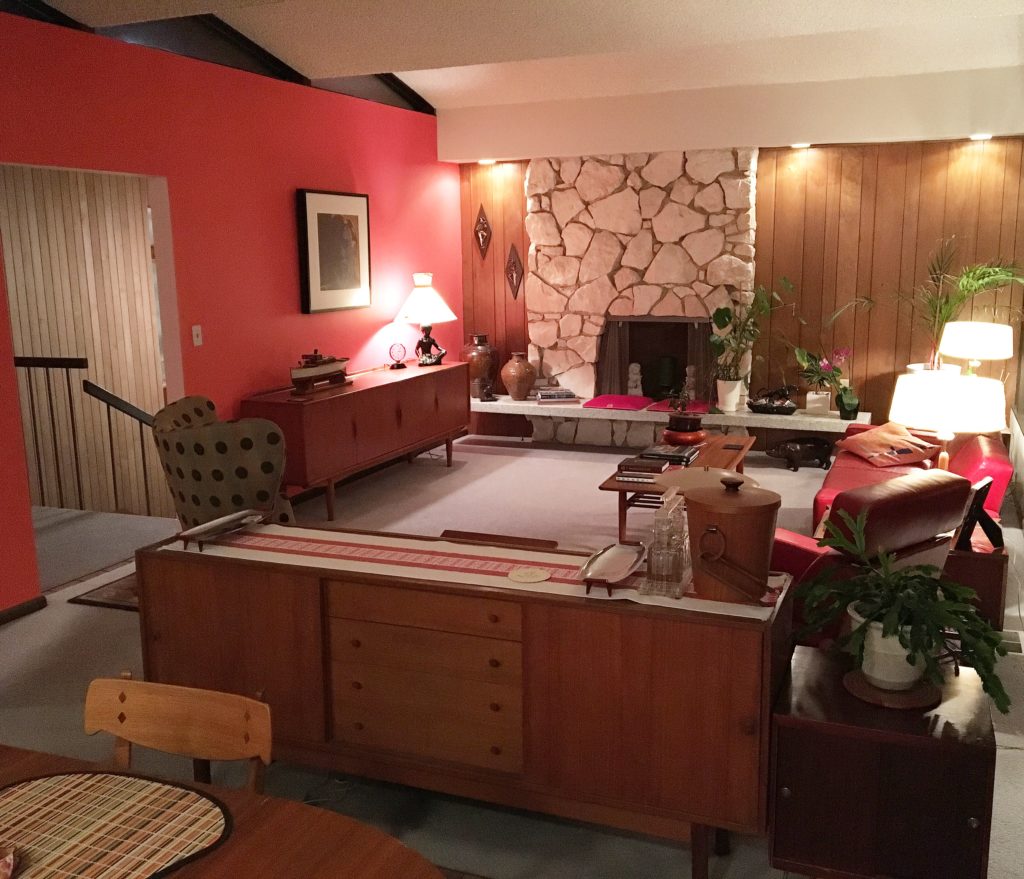
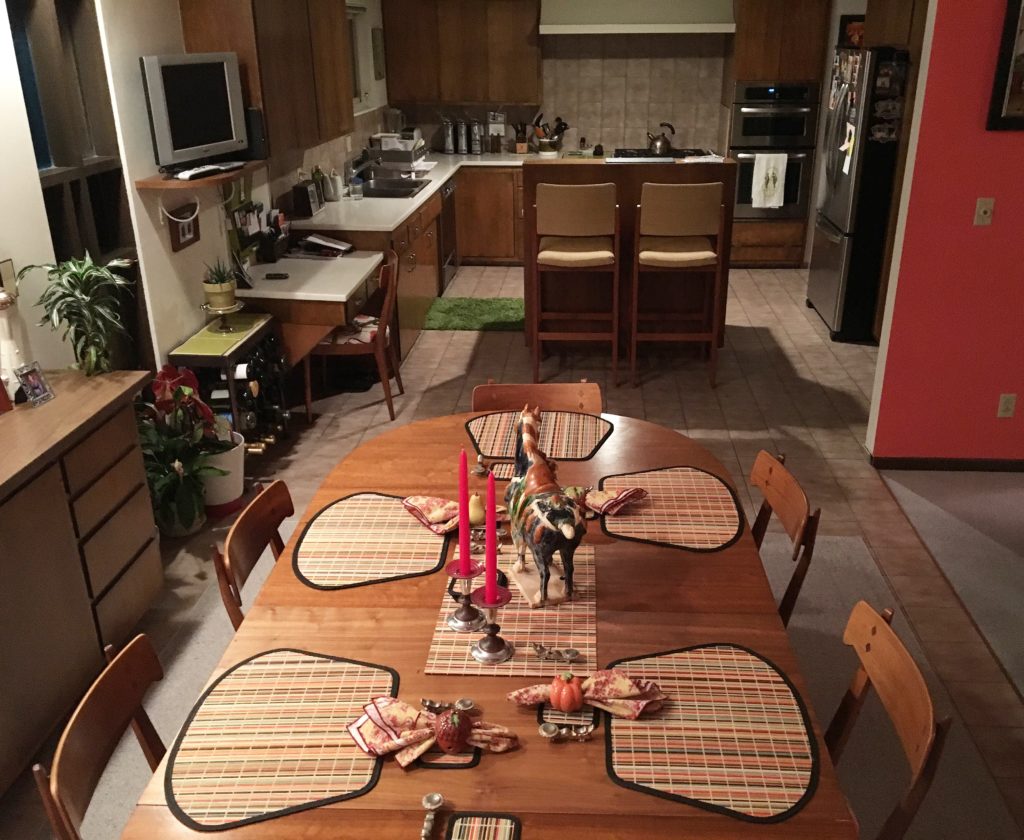
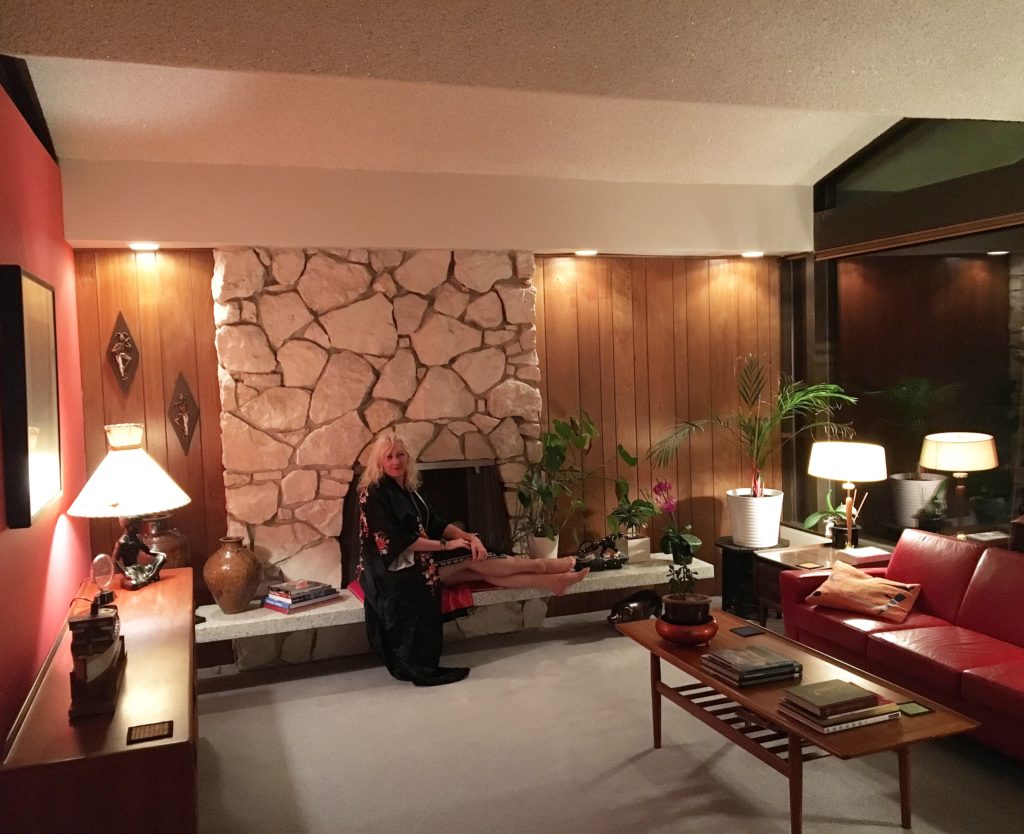
Any future plans for your bar?
Jeffrey- I need to finish the pagoda over the bar. The ceiling will be trimmed out in gold and have a Chinese zodiac stenciled on it. A friend is creating a tile mosaic for in front of the fireplace. I want to have custom textiles done for the seats, drapes, etc. The entry from the lower door will be revamped some day and I’d like to build a twelve-hole zodiac-themed mini golf course out back. Meanwhile, I keep adding to the garden and will put a seasonal Tiki bar out there.
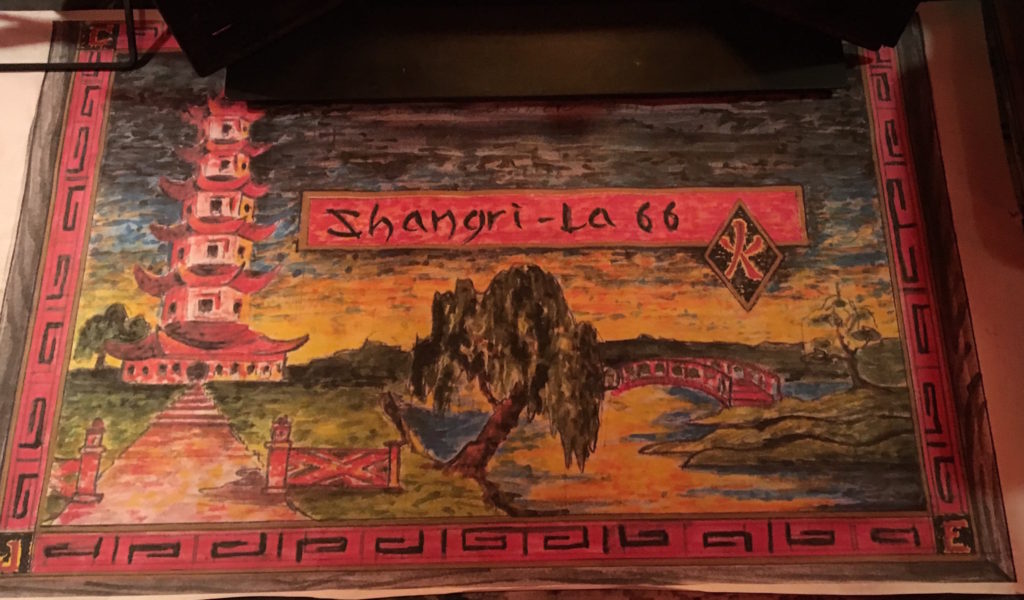
Anything else you would like to add?
Jeffrey- Shangri-La 66 is a tribute to the last of the Chinese restaurants. The “66” is the year the house was built and a lucky number for the house. The rest of the name is from the book “Lost Horizon,” about the (mythical?) heavenly village of Shangri-La somewhere in the Tibetan mountains. Nothing changes there and life is perfect.
